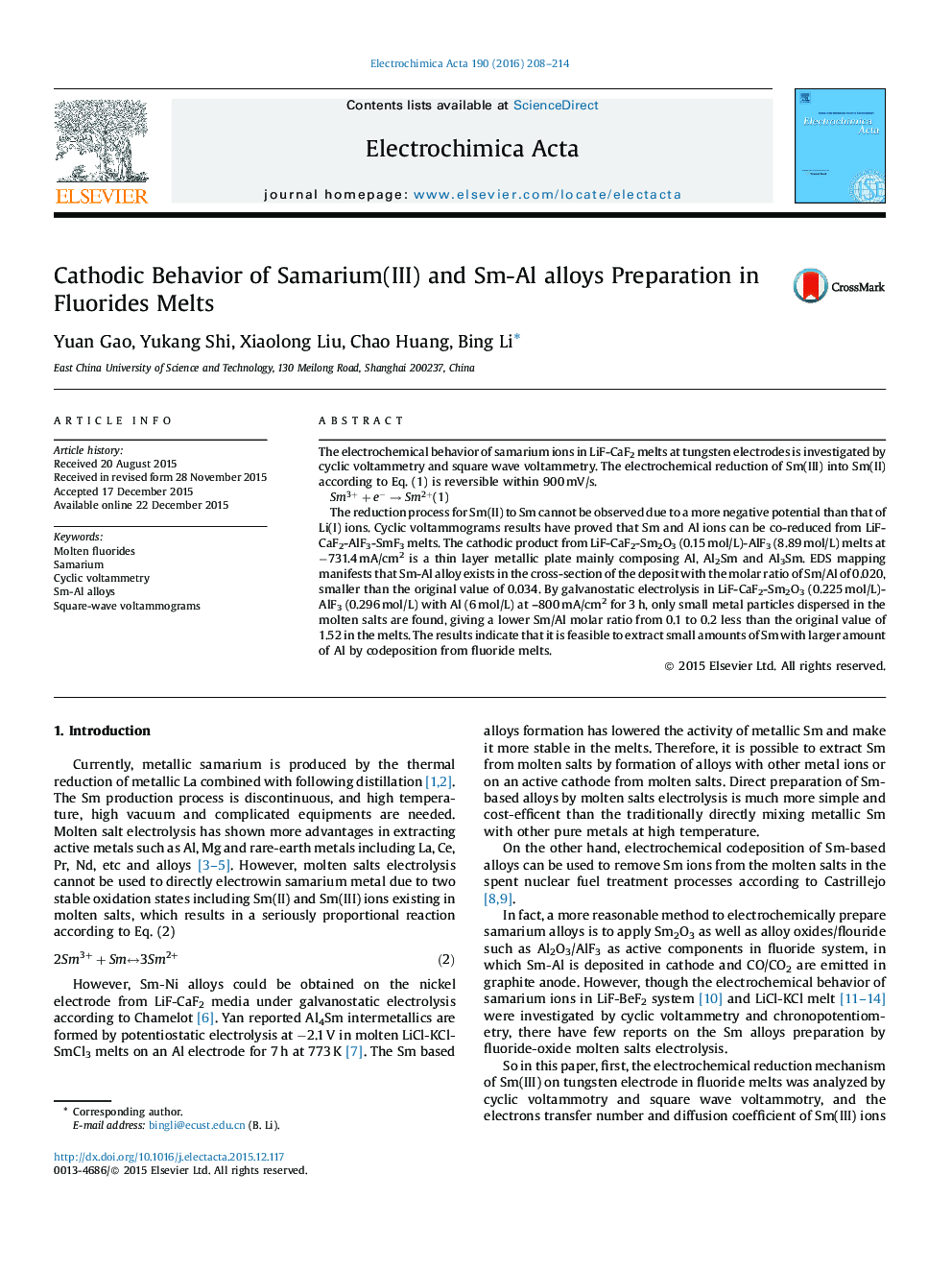| Article ID | Journal | Published Year | Pages | File Type |
|---|---|---|---|---|
| 6609318 | Electrochimica Acta | 2016 | 7 Pages |
Abstract
The reduction process for Sm(II) to Sm cannot be observed due to a more negative potential than that of Li(I) ions. Cyclic voltammograms results have proved that Sm and Al ions can be co-reduced from LiF-CaF2-AlF3-SmF3 melts. The cathodic product from LiF-CaF2-Sm2O3 (0.15Â mol/L)-AlF3 (8.89Â mol/L) melts at â731.4Â mA/cm2 is a thin layer metallic plate mainly composing Al, Al2Sm and Al3Sm. EDS mapping manifests that Sm-Al alloy exists in the cross-section of the deposit with the molar ratio of Sm/Al of 0.020, smaller than the original value of 0.034. By galvanostatic electrolysis in LiF-CaF2-Sm2O3 (0.225Â mol/L)-AlF3 (0.296Â mol/L) with Al (6Â mol/L) at -800Â mA/cm2 for 3Â h, only small metal particles dispersed in the molten salts are found, giving a lower Sm/Al molar ratio from 0.1 to 0.2 less than the original value of 1.52 in the melts. The results indicate that it is feasible to extract small amounts of Sm with larger amount of Al by codeposition from fluoride melts.
Related Topics
Physical Sciences and Engineering
Chemical Engineering
Chemical Engineering (General)
Authors
Yuan Gao, Yukang Shi, Xiaolong Liu, Chao Huang, Bing Li,
